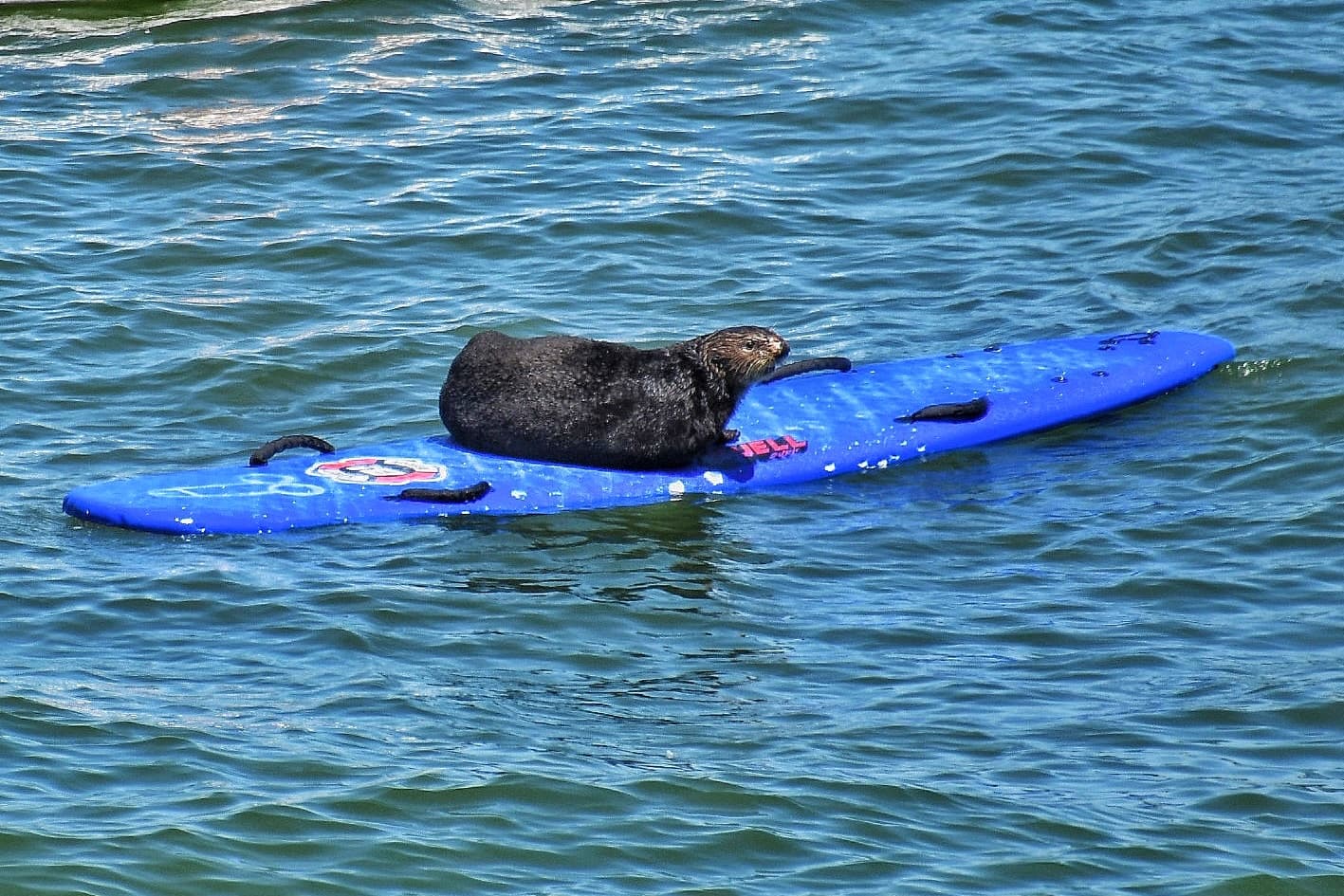Here in Santa Cruz we’ve always been a fan of these adorable, furry and playful creatures. Not only are they fun to watch, but they play a vital role in the health and vitality of Monterey Bay. In this issue of Santa Cruz Vibes Magazine, we’re diving headfirst into the otter craze. Join us as we paddle through the enchanting world of these aquatic acrobats. But hold on tight, because when you’re in the company of otters you never know what will happen.
Q: Wow, you guys have attracted global media attention this year. What’s your thoughts on becoming an overnight sensation?
A: Dude, we’re hardly an overnight sensation. In the late 1850s, otter pelts were all the rage. As our numbers dwindled, however, the Monterey Bay fell into ruin. Karma, I guess. But thanks to conservation efforts in the 1960s, fish stocks rebounded and marine habitats began to recover. We’ve been a California icon ever since. Have you seen all the cool T-shirts this year?
Q: Yes, love all the fun promo items. Saw them everywhere at a recent art and wine festival. But I thought the official state animal was the Grizzly Bear?
A: Next question, please.
Q: Tell us a little bit more about a typical day. What do you like to eat?
A: It’s all about the crunch for me. Sea urchins, crabs, snails, mussels, and abalone. But our diet choices make us environmentalists, ya know.
Q: Please explain.
A: Well, we keep the kelp forests healthy and it’s the kelp that absorbs carbon dioxide. That whole climate change thing. Again, we’re here to save your tails, I guess.
Q: We don’t have tails.
A: [Sigh] Are we about done here?
Q: Just a few more questions, please. What do you guys like to do for fun? Do you like surfing?
A: Seriously? Is this about 841? I’m so over it. [splashing]



